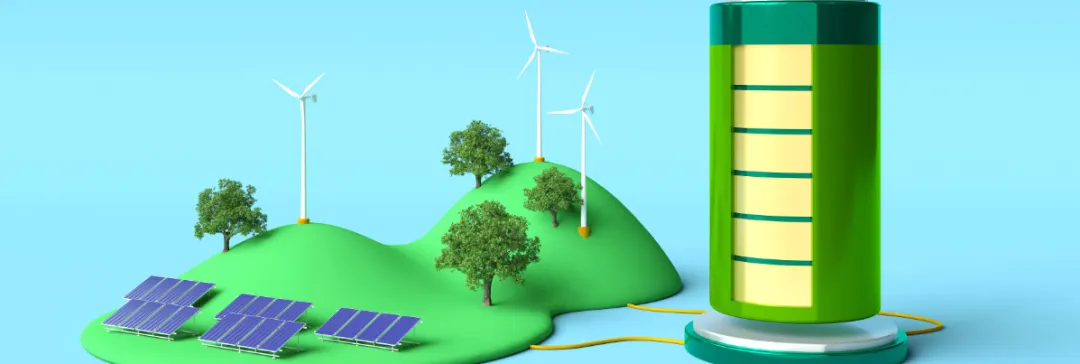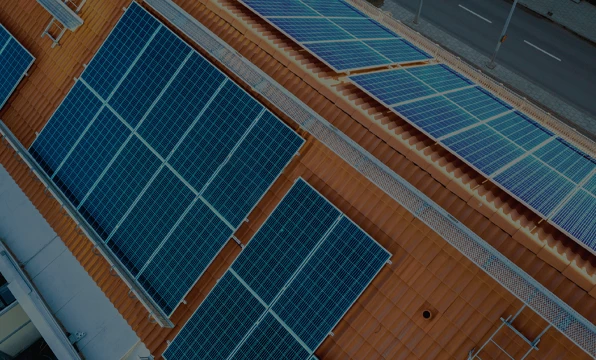Against the backdrop of the rapid development of the global energy storage industry, the iteration of battery technology and intensified market competition are reshaping the industry landscape.
The once popular 280Ah energy storage battery has gradually withdrawn from the market due to technical bottlenecks and cost pressures, while the new generation of 314Ah energy storage battery is rising strongly with its higher energy density, longer cycle life and lower cost.
The once popular 280Ah energy storage battery has gradually withdrawn from the market due to technical bottlenecks and cost pressures, while the new generation of 314Ah energy storage battery is rising strongly with its higher energy density, longer cycle life and lower cost.

The glory and end of 280Ah
280Ah energy storage cells were once one of the mainstream products in the energy storage industry, and were widely used in household energy storage, industrial and commercial energy storage, and grid-level energy storage projects. Its technical characteristics are high energy density and relatively mature manufacturing processes, which can meet the needs of the early energy storage market. Especially from 2018 to 2022, with the rapid popularization of renewable energy around the world, 280A cells quickly occupied the market with its cost-effective advantages.
During this period, Chinese battery companies represented by CATL and BYD, as well as international giants such as LG Chem and Samsung SDI, have launched energy storage solutions based on 280Ah cells. These products have achieved remarkable success in domestic and foreign markets, especially in developed regions such as Europe and North America, where 280Ah cells have become standard for energy storage systems.
However, with the rapid development of the energy storage market and the continuous improvement of user demand, the limitations of 280Ah cells have gradually emerged. First, its energy density has approached the technical ceiling, making it difficult to meet the needs of higher capacity and longer battery life. Secondly, the cycle life of 280Ah batteries is relatively short, especially in high-rate charge and discharge scenarios, the performance decays quickly, affecting the economy of the energy storage system.
In addition, the fluctuation of raw material prices has also brought cost pressure to 280A batteries. Since 2021, the price of key raw materials such as lithium iron phosphate has risen sharply, resulting in high production costs for 280A batteries. At the same time, the rise of a new generation of battery technology has further compressed the market space for 280A batteries.
In 2023, with the mass production and commercialization of 314A cells, the market share of 280A cells began to decline sharply. Many battery companies announced the gradual elimination of 280A cell production lines and focused on the research and development and production of new generation products. By 2024, 280A cells will accelerate and only retain demand in some application scenarios.
During this period, Chinese battery companies represented by CATL and BYD, as well as international giants such as LG Chem and Samsung SDI, have launched energy storage solutions based on 280Ah cells. These products have achieved remarkable success in domestic and foreign markets, especially in developed regions such as Europe and North America, where 280Ah cells have become standard for energy storage systems.
However, with the rapid development of the energy storage market and the continuous improvement of user demand, the limitations of 280Ah cells have gradually emerged. First, its energy density has approached the technical ceiling, making it difficult to meet the needs of higher capacity and longer battery life. Secondly, the cycle life of 280Ah batteries is relatively short, especially in high-rate charge and discharge scenarios, the performance decays quickly, affecting the economy of the energy storage system.
In addition, the fluctuation of raw material prices has also brought cost pressure to 280A batteries. Since 2021, the price of key raw materials such as lithium iron phosphate has risen sharply, resulting in high production costs for 280A batteries. At the same time, the rise of a new generation of battery technology has further compressed the market space for 280A batteries.
In 2023, with the mass production and commercialization of 314A cells, the market share of 280A cells began to decline sharply. Many battery companies announced the gradual elimination of 280A cell production lines and focused on the research and development and production of new generation products. By 2024, 280A cells will accelerate and only retain demand in some application scenarios.
The rise of 314Ah battery cells
The rise of 314Ah energy storage cells is inseparable from its significant technological breakthroughs. Compared with 280A cells, the energy density of 314A cells has increased by about 20% based on manufacturing processes and material innovations. This improvement is mainly due to the optimization of positive electrode materials, negative electrode materials and electrolytes.
In addition, the cycle life of 314Ah cells has also been greatly improved. By improving the electrode structure and electrolyte formula, 314Ah cells can achieve a cycle life of more than 6,000 times under standard charging and discharging conditions, which is about 30% higher than 280Ah cells. This feature makes 314A cells more economical in long-cycle energy storage scenarios.
Another advantage of 314Ah cells is cost. Although its initial R&D investment is high, the unit cost has dropped significantly with the advancement of large-scale production. According to industry data, the production cost of 314A cells has dropped to less than US$90 per kilowatt-hour (kWh) in 2024, which is about 15% lower than 280Ah cells.
The rise of 314Ah cells is not only reflected in technology, but also in its wide range of market applications. In the field of industrial and commercial energy storage, the high rate charge and discharge performance and low cost advantages of 314Ah cells enable it to perform well in scenarios such as peak-valley electricity price arbitrage and emergency backup power supply.
In grid-level energy storage projects, the application of 314Ah cells has also made breakthrough progress. In 2024, five large and six small owners and other enterprises have successively bid for 314A cells or large-scale energy storage systems equipped with 314Ah for grid frequency regulation and renewable energy consumption. In overseas markets, 314Ah such as CATL, EVE Energy, HITHIUM and CALB have also been rapidly penetrated.
Among them, Sungrow Power Titan 2.0 liquid-cooled energy storage system is equipped with CALB314Ah cells, winning Saudi Arabia's 7.8GWh energy storage order and promoting cost reduction through standardized production. The successful implementation of these projects further verified the technical feasibility and economic efficiency of 314A cells.
In addition, the cycle life of 314Ah cells has also been greatly improved. By improving the electrode structure and electrolyte formula, 314Ah cells can achieve a cycle life of more than 6,000 times under standard charging and discharging conditions, which is about 30% higher than 280Ah cells. This feature makes 314A cells more economical in long-cycle energy storage scenarios.
Another advantage of 314Ah cells is cost. Although its initial R&D investment is high, the unit cost has dropped significantly with the advancement of large-scale production. According to industry data, the production cost of 314A cells has dropped to less than US$90 per kilowatt-hour (kWh) in 2024, which is about 15% lower than 280Ah cells.
The rise of 314Ah cells is not only reflected in technology, but also in its wide range of market applications. In the field of industrial and commercial energy storage, the high rate charge and discharge performance and low cost advantages of 314Ah cells enable it to perform well in scenarios such as peak-valley electricity price arbitrage and emergency backup power supply.
In grid-level energy storage projects, the application of 314Ah cells has also made breakthrough progress. In 2024, five large and six small owners and other enterprises have successively bid for 314A cells or large-scale energy storage systems equipped with 314Ah for grid frequency regulation and renewable energy consumption. In overseas markets, 314Ah such as CATL, EVE Energy, HITHIUM and CALB have also been rapidly penetrated.
Among them, Sungrow Power Titan 2.0 liquid-cooled energy storage system is equipped with CALB314Ah cells, winning Saudi Arabia's 7.8GWh energy storage order and promoting cost reduction through standardized production. The successful implementation of these projects further verified the technical feasibility and economic efficiency of 314A cells.

The exit of 280A energy storage cells and the rise of 314A energy storage cells are not only the inevitable result of technological iteration, but also a vivid portrayal of market competition. CATL, EVE,CALB, HITHIUM and other companies have deployed 500Ah+ large-capacity cells, and 500Ah+ ultra-large-capacity cells such as CATL and EVE Energy can already achieve mass production.
As a representative of the next generation of energy storage technology, 500Ah+ cells have potential in energy density and system integration, but technical and cost issues need to be resolved. In the future, they are expected to be gradually popularized in ultra-large-scale energy storage projects.
In the next few years, 314Ah cells and 500Ah+ cells will coexist and develop to meet the needs of different scenarios.
At present, the life cycle of 314Ah energy storage cells has generally reached 10,000-15,000 cycles, and the actual service life can reach 15-20 years after system optimization. Technology-leading companies such as EVE Energy, HITHIUM Energy Storage, Sunwoda Power, and CALB have become leaders in the long-life track through material and process innovation, and scene adaptability and cost advantages will determine the depth and durability of their market penetration.
In the view of some industry insiders, the market share of 500Ah+ batteries will gradually expand, but 314Ah batteries will still occupy an important position in the next three years.
As a representative of the next generation of energy storage technology, 500Ah+ cells have potential in energy density and system integration, but technical and cost issues need to be resolved. In the future, they are expected to be gradually popularized in ultra-large-scale energy storage projects.
In the next few years, 314Ah cells and 500Ah+ cells will coexist and develop to meet the needs of different scenarios.
At present, the life cycle of 314Ah energy storage cells has generally reached 10,000-15,000 cycles, and the actual service life can reach 15-20 years after system optimization. Technology-leading companies such as EVE Energy, HITHIUM Energy Storage, Sunwoda Power, and CALB have become leaders in the long-life track through material and process innovation, and scene adaptability and cost advantages will determine the depth and durability of their market penetration.
In the view of some industry insiders, the market share of 500Ah+ batteries will gradually expand, but 314Ah batteries will still occupy an important position in the next three years.
Follow XIHO Power,learn the latest information on China's lithium battery market !
 +86 13332949210
+86 13332949210 info@xihobattery.com
info@xihobattery.com







 Xiho
Xiho Apr 10 2025
Apr 10 2025









